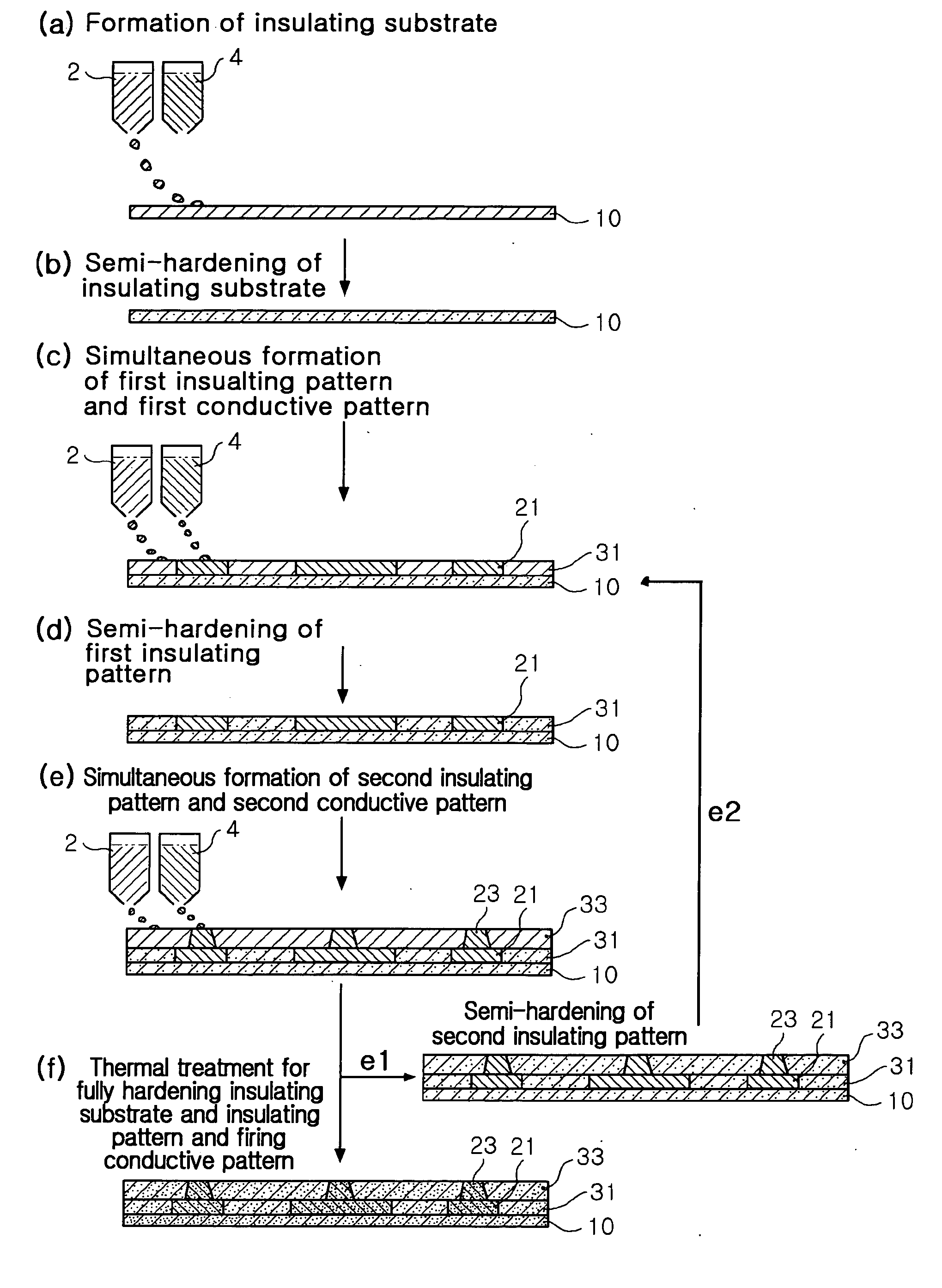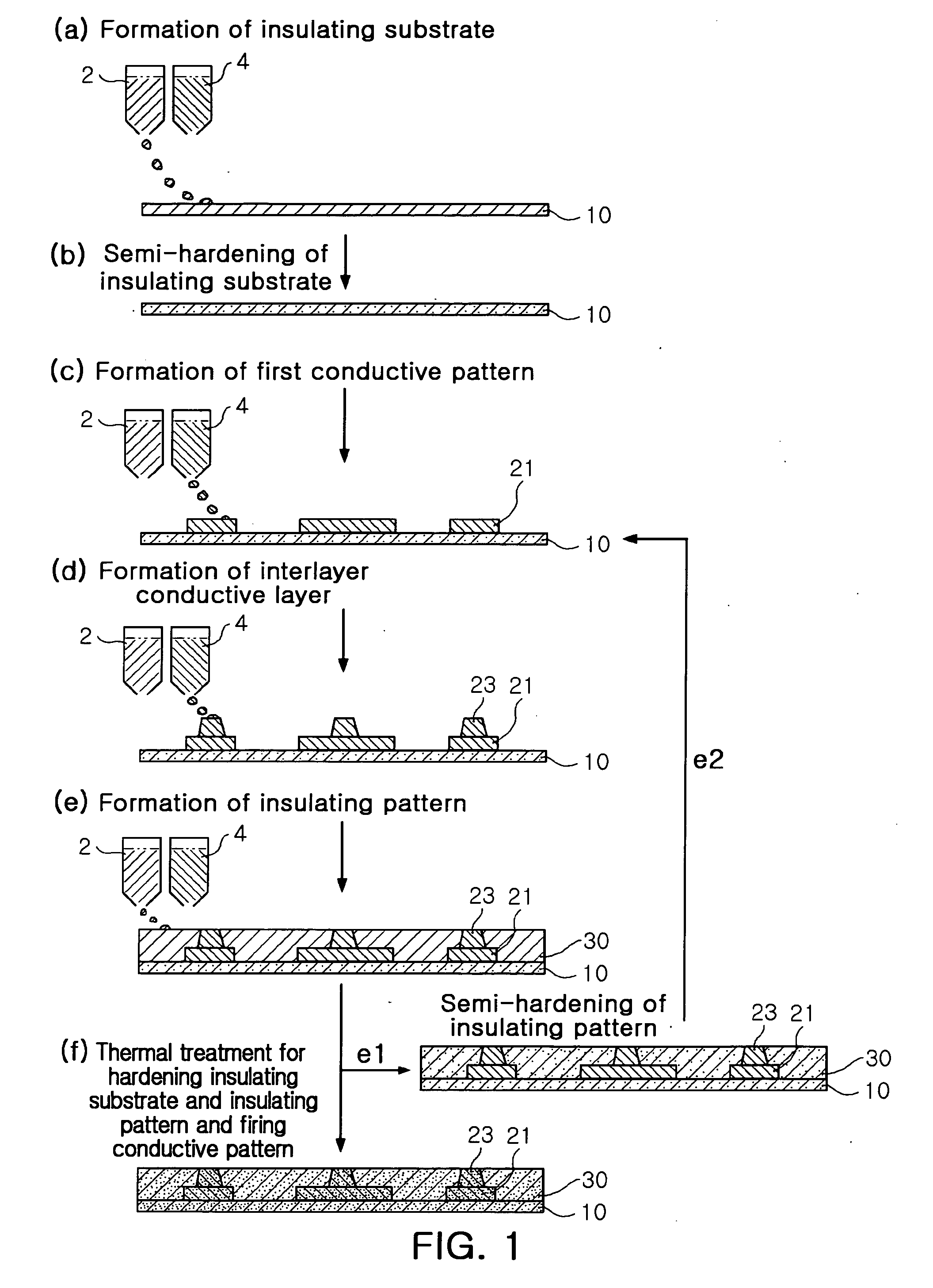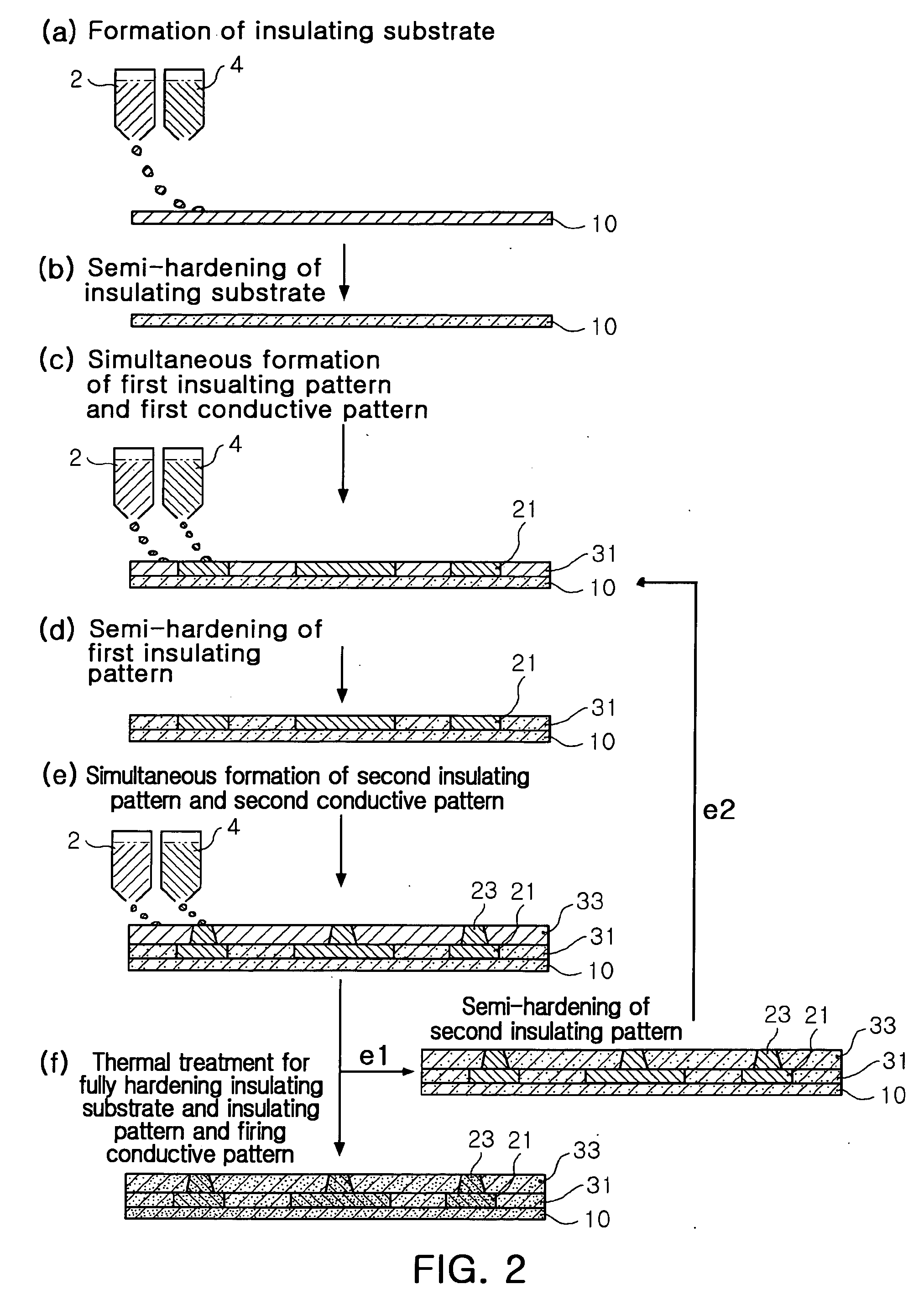Printed wiring board and method for manufacturing the same
- Summary
- Abstract
- Description
- Claims
- Application Information
AI Technical Summary
Benefits of technology
Problems solved by technology
Method used
Image
Examples
embodiment 1
[0075] Silver nitride and PVP (MW=10,000) were mixed at a mole ratio of 1:8, and dimethyl formamide (DMF) was added as a reducing agent to a purified water at a volume ratio of 1:1. Then, the reaction was conducted at 100° C. for 30 minutes. Consequently, the conductive ink with 50-nm silver nano particles caped with PVP was prepared.
[0076] The insulating ink was prepared by mixing polyimide precursor, photo-polymerization initiator, and crosslinking agent, as shown in Table 1 below. In Table 1, PAA represents polyamic acid that is the polyimide precursor, MBHP (4,4′-methylenebis[2,6-bis(hydroxymthyl)]phenol) was used as the crosslinking agent. PTMA(5-propylsulfonly-oxyimino-5H-thiophen-2-ylidene)-2-(methylphenyl)-acetonitrile) was used as the photo-polymerization initiator.
[0077] As shown in FIGS. 1(a) and 1(b), the insulating substrate was formed by printing the insulating ink using the inkjet process and then was dried at 100° C., and was semi-hardened by irradiating UV rays. A...
embodiment 2
[0080] Silver nitride and PVP (MW=10,000) were mixed at a mole ratio of 1:8, and dimethyl formamide (DMF) was added as a reducing agent to a purified water at a volume ratio of 1:1. Then, the reaction was conducted at 100° C. for 30 minutes. Consequently, the conductive ink with 50-nm silver nano particles caped with PVP was prepared.
[0081] 1,1′-(methylene-di-4,1-phenylene)bismaleimide was dissolved in the mixed solution of methyl ethyl ketone (MEK) and dimethyl formamide (DMF) and thus the insulating ink of 15 cps was obtained. PTMA (5-propylsulfonyl-oxyimino-5H-thiophen-2-ylidene)-2-(methylphenyl)-acetonitrile) was used as the photo-polymerization initiator.
[0082] As shown in FIGS. 2(a) and 2(b), the insulating substrate was formed by printing the insulating ink using the inkjet process and then was dried at 100° C., and was semi-hardened by irradiating UV rays. As shown in FIG. 2(c), the first conductive pattern and the first insulating pattern were formed by printing the condu...
PUM
| Property | Measurement | Unit |
|---|---|---|
| Temperature | aaaaa | aaaaa |
| Electrical conductor | aaaaa | aaaaa |
| Peel strength | aaaaa | aaaaa |
Abstract
Description
Claims
Application Information
 Login to View More
Login to View More - R&D
- Intellectual Property
- Life Sciences
- Materials
- Tech Scout
- Unparalleled Data Quality
- Higher Quality Content
- 60% Fewer Hallucinations
Browse by: Latest US Patents, China's latest patents, Technical Efficacy Thesaurus, Application Domain, Technology Topic, Popular Technical Reports.
© 2025 PatSnap. All rights reserved.Legal|Privacy policy|Modern Slavery Act Transparency Statement|Sitemap|About US| Contact US: help@patsnap.com



